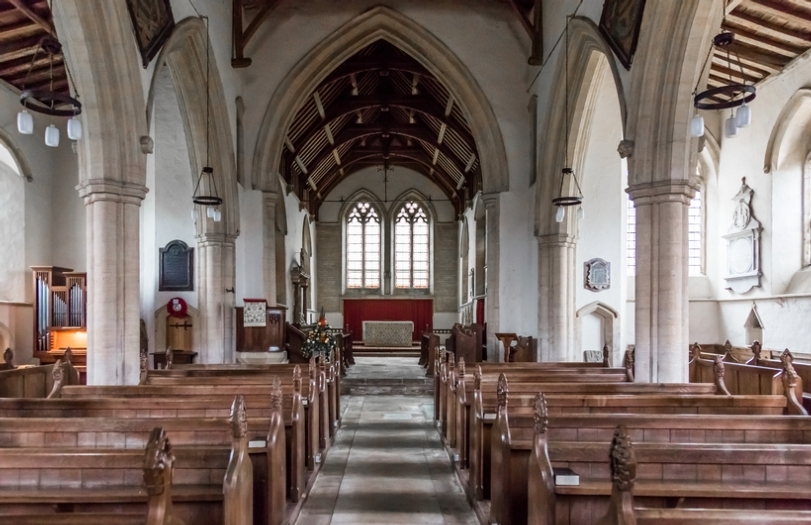Behind the scenes at St Andrew's Church, Ufford
Last October, St Andrew’s Church, Ufford, near Stamford was taken under the care of The Churches Conservation Trust. St Andrew’s became our 346th acquisition and joined a range of important historic churches spanning 1000 years of history.
As with all new churches that come to CCT, St Andrew’s is currently undergoing a programme of repair and conservation work. The works include the re-roofing of the distinctive Collyweston slates on the roof of the chancel, masonry repairs and conservation of the monuments. These repairs will cost in the region on £500,000 and are being carried out by local specialist heritage building contractors, Messenger Construction.
The CCT and Messenger construction are held a special open day at the church recenly where members of the public came along to find out more about the craft skills that are used in such a project. This gave visitors a chance to have a look around the church, which is currently closed due to the works. There were a number of displays showing traditional crafts such as lead working, hatchment conservation and one of the perhaps most interesting aspects of the project, the work on the Collyweston slate roof, something that Messenger specialises in.
Gabriella Misuriello, Conservation Projects Manager at CCT said: ""I’m delighted that we are working with Messenger Construction on this innovative project supporting and promoting the continued use of traditional Collyweston roofing slates. The new method of production of Collyweston slates has created a great deal of interest in the heritage sector as the stone hasn’t been quarried and slates produced in any great quantity since the 1970s and so it is a much prized roofing material.'
The traditional Collyweston stone slate is not a proper ‘slate’ at all but a type of limestone found in narrow beds. Following two years of manufacturing trials with English Heritage and Sheffield Hallam University, Messenger has helped determine the precise process necessary to create ‘new’ Collyweston stone slates using an artificial freezing process.
Messenger uses a large commercial deep freezer unit to replicate the splitting process which would normally have occurred when the large limestone slabs were exposed to frost during the winter months. Once the imitated frosting and thawing process has been able to highlight the natural bedding planes within the stone, splitting or ‘cliving’ of the stone is undertaken by hand by skilled Messenger stone masons to create the dressed and sized ‘slates’.
Messenger’s ‘new’ Collyweston stone slates will be expertly fixed alongside the existing Collyweston stone slates to the chancel roof at St Andrew’s
We are running a 'techinical day' where you can find out more about the Collyweston slating process, climb up the scaffold to see the roof and visit the Messenger workshop.

